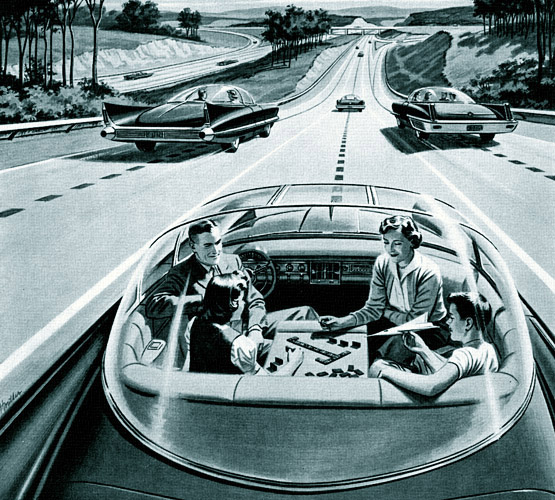In Ashley Halsey III’s Washington Post piece about the future of driverless, he focuses on two important aspects: 1) The U.S. government seems at this point to be an ally of the technological shift, and 2) Vehicle-to-Vehicle communication is an important part of next-level car safety, a fact often lost in the awe factor of witnessing cars driving themselves.
I’ve yet to read many thoughtful comments from anyone in American government in regards to the profound economic destabilization this changeover may provoke. This new industry will likely kill far more jobs than it creates, which doesn’t mean we should be Luddites about it, but we should be thinking of solutions should this situation arise.
An excerpt:
The administration push is recognition of a fact that is largely lost on many Americans: though it will dawn gradually, the era of the autonomous car is upon them. …
Like any innovation in the automotive marketplace, the advent of cars that talk to each other (known as vehicle-to-vehicle or V2V) and fully autonomous cars will take years to unfold.
Foxx anticipated that the technology would be fully rolled out within 10 years and that it might be three decades before fully autonomous vehicles rule the roads.
The secretary and officials at the National Highway Traffic Safety Administration also showed a firm commitment to cementing the marriage of two closely related technologies: driverless vehicles and direct computer communication between cars on the road.
“V2V offers things that you just can’t get through on-vehicle sensors, through cameras and radar and lasers and so forth,” said a NHTSA official who spoke on the condition of anonymity because he is not authorized to speak publicly on the subject. “V2V sees around corners, it sees 15 cars ahead in traffic and across three or four lanes of traffic. It sees not only the car that is about to speed into the intersection, but whether the driver has applied the brake or not.”


